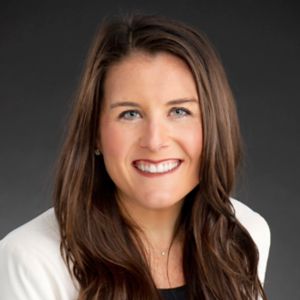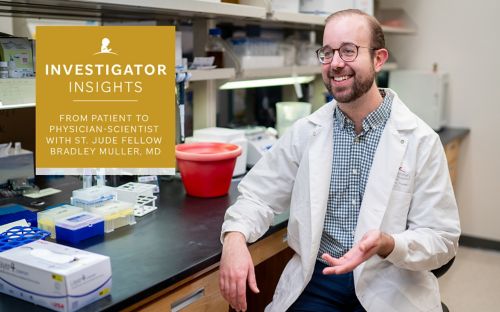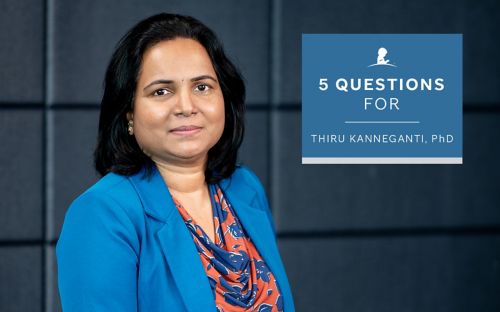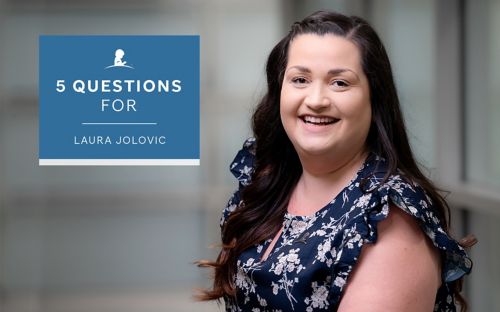Connections with colleagues: A St. Jude pediatric psychologist has renewed appreciation for an overlooked benefit of interdisciplinary collaboration.
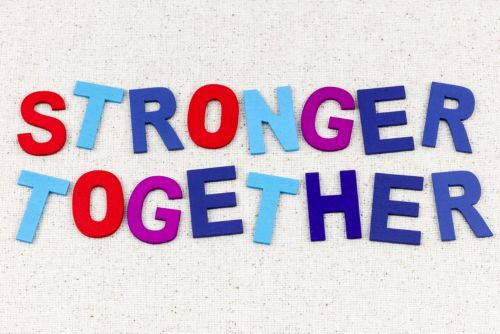
One of the reasons I enjoy my work as a pediatric psychologist at St. Jude Children’s Research Hospital is interdisciplinary collaboration.
I began my career as a child life specialist at another children’s hospital, where I saw firsthand staff from different professional disciplines working together to achieve a common aim. At St. Jude, I repeatedly see group action elevate patient care.
But the pandemic helped me appreciate an additional benefit.
In March 2020, my team transitioned to a remote care setup. I found myself practicing in isolation for the first time. As someone who thrives on connection, this period underscored the emotional boost many staff feel from being inside the walls of the hospital, where it’s possible to work side by side with teammates devoted to the same mission.
From my home office, I realized how the physical presence of my co-workers motivates me to do my best work. In the absence of this in-person connection, I felt drained and alone.
When the opportunity presented itself recently to write about the art of psychosocial oncology, a regular feature in the Journal of Psychosocial Oncology, I immediately thought about the myriad of ways psychosocial providers have adapted to the pandemic: telehealth co-treatment sessions with other disciplines, web-based psychosocial rounds, countless phone calls and emails, to name but a few strategies.
For the article, my co-authors and I brought together representatives from several psychosocial disciplines at St. Jude: Child Life/Music Therapy, Social Work, Psychology, Psychiatry. We started with the simple idea of illuminating novel approaches to interdisciplinary collaboration during COVID-19.
When the paper was complete, it captured how psychosocial oncology practices at St. Jude evolved during a time of crisis to support patients and families. But it revealed something else, something undoubtedly present before the COVID-19 virus.
“Interdisciplinary communication and collaboration isn’t just in the best interests of our patients, but it serves us as providers and people,” said Andrew Elliott, MD, a co-author and St. Jude colleague. “It staves off the isolation that was all too easy to feel practicing telehealth from our homes. It validates the difficulty of the work and allows us to share moments of success. It fosters growth and creativity in practice. And perhaps most importantly, it reminds us that we are often at our best when we are working together and towards a shared goal.”
As the final draft of the paper took shape, I gained a renewed appreciation for the power of interdisciplinary collaboration — its power to amplify top-notch psychosocial care and — at the same time — nourish the spirit of those who provide it.
This article is the third in a series about the art of psychosocial oncology featuring St. Jude Psychosocial Services staff.
The study's first author is Elyse Heidelberg, PsyD, Department of Psychology. Other St. Jude authors are Celeste Douglas, MT-BC, Department of Child Life; Erin Turner, LCSW, Department of Social Work; Andrew Elliott, MD, Department of Pediatric Medicine; Valerie Crabtree, PhD, Psychosocial Services chief; and Jennifer Allen, PhD, Department of Psychology.
